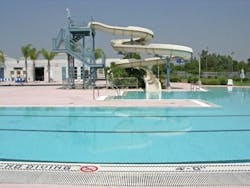Recreational Water Treatment: Training & Testing
About the author: Wayne Ivusich is an instructor for the National Swimming Pool Foundation, a member of the NSPF Instructor Education Committee and director of education for Taylor Technologies Inc. Ivusich can be reached at [email protected].
When professionals are entrusted to care for a public or residential pool or spa, their primary responsibilities to owners and users are to reduce risk, improve efficiency, and ensure more benefits and fewer consequences. Wherever there is treated water, risks include drowning, chemical exposure, injury, equipment damage and recreational water illness.
CPO Certification
In 1965, the nonprofit National Swimming Pool Foundation (NSPF) was founded to promote the educational and research needs of the emerging pool and spa industry. The organization works to develop products and programs that keep pools safer and open. It also provides education to pool and spa professionals through the annual World Aquatic Health Conference, in addition to classroom and online educational programs. As of July 2015, NSPF-certified instructors have trained more than 400,000 professionals in 93 countries.
Developed by NSPF in the early 1970s, Certified Pool/Spa Operator (CPO) certification has become the industry standard for training professionals who care for pools and spas. This 16-hour course reviews almost every aspect of swimming pool and spa operation, including chemistry, circulation, disinfection and facility safety. Professionals can earn CPO certification using materials in English, Spanish, French, Russian and Ukrainian, in both standard and metric units. In addition, blended training is available, where part of the course is covered online, and the remainder is covered in a one-day in-person course. This resource is crucial as a means to improved facility operations and maintenance. The Centers for Disease Control & Prevention’s Model Aquatic Health Code and 24 states require verifiable training and certification consistent with that covered in the CPO certification course for public facilities.
Approximately 29,000 professionals earn CPO certification each year. To best protect users and facilities, there should be trained and certified operators and managers at every public pool facility. Many organizations also require certain staff, such as head lifeguards or program managers, to have CPO certification. In addition, service company personnel and managers who treat and maintain public pools are encouraged to earn CPO certifica- tion. In some cases, a contractor or licensed professional also must be certified.
Pool Water Testing
Good water quality ensures that risk of illness is mini- mized and the water’s aesthetics are maintained. As a result, water quality is one of the key responsibilities of a pool professional. An integral aspect of CPO certification training is knowing how to correctly identify equipment and water problems and how to fix them. It is important to know which tests to perform and which chemicals to add.
Swimming pools and spas are tested for two reasons: to be certain the water is properly disinfected and oxidized in order to provide a sanitary environment, and to protect equipment and ensure it is operating properly. Depending on the location of the facility, local health codes may require all of the aquatic features at the facility to be tested and the results recorded on a regular basis. Local codes differ as to how often testing is required—it can be once a day, twice a day or every two hours.
The most important tests to perform to ensure that water is kept sanitary are disinfectant level—also called sanitizer (usually free chlorine or total bromine)—and pH. To help protect the facility, surfaces and equipment, water balance should be tested and maintained. There are six key parameters (in addition to disinfectant) that should be tested on a regular basis to determine the water balance:
• pH;
• Total alkalinity;
• Calcium hardness;
• Temperature;
• Total dissolved solids; and
• Cyanuric acid.
These parameters influence water balance, which is calculated using the Langelier Saturation Index (LSI). The LSI determines whether water has a corrosive or scale-forming tendency. Knowing how to test these parameters, interpreting the results and making water chemistry changes are important operator responsibilities. The LSI can be calculated manually or using a smartphone app.
To ensure consistent, accurate and reliable test results, it is imperative that the professional testing the water care- fully follows the test kit or system directions. Never inter- change kits, or switch reagents or products between kits or systems. Additionally, test reagents must be stored and handled properly. Test water immediately after sampling, because disinfectant levels change over time. It is better to use clean plastic sample containers; avoid glass, as it can break and result in a cut hazard. Transfer the sample to a glass container away from the pool area if the test kit requires that.
Testing and treatment go hand in hand, and understanding the specifics of how to treat is essential. There are hundreds of treatment products available to improve and/or ensure proper water quality; it is important to know which one to use, how much to use and how to add it to the water. By earning a CPO certification, professionals can better understand how to maintain a pool or spa to keep it safer. The end result will be that users get more healthy activity and time with family and friends with fewer risks.
Download: Here
